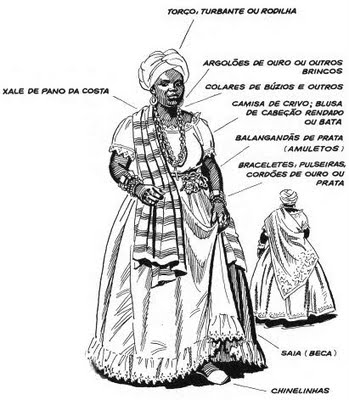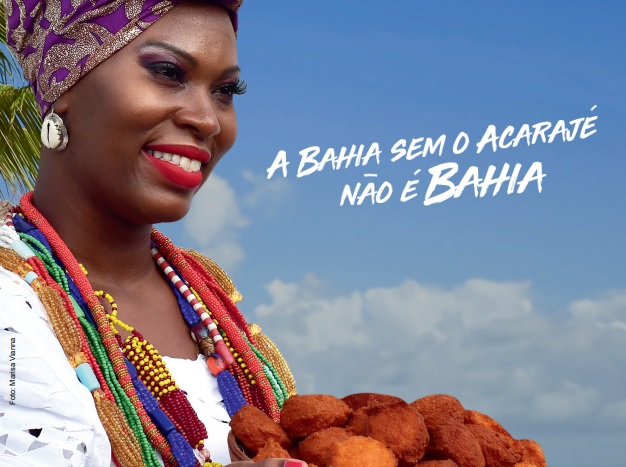Este post também está disponível em:
Português
English
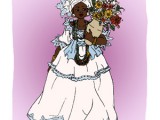
The Bahian women’s costume, which we usually call baiano, reflects the influence of African culture in Brazil, combined with the twisting and turning of the body.
The typical costume of the baiana is a set of traditional clothing and is the same as that worn in candomblé terreiros.
There are outfits for all occasions.
The ration costume is the simplest and costumes made with Richelieu embroidery can be very expensive.
The baiana costume can take on a special colour when it comes to baianas at tourist events.
Samba school baiana costumes are a case in point: they change colour and model according to the school’s theme each year, just like those of the Maracatu in the Northeast.
The turbulence of the baianas and the balangandans indicate elements of the Islamic culture prevalent in North Africa (Sudan).
Pencas de balangandãs were part of the traditional clothing of the negras mucamas of the 18th and 19th centuries.
Balangandã is an ornament of coloured beads or an amulet in the form of a figurine, fruit, medal, coin, key or anima tooth; a ring pendant, brooch, earrings or silver bracelet, worn by baianas on festive days.
Figurines, teeth and guides are used as amulets for protection, praise or to fight the evil eye.
The figurine, in particular, is an amulet in the shape of a closed hand, with the thumb between the index and big finger, used as a personal ornament, for the home or business.
In Africa, the cloth of the coast was only a complement to the clothing of black women, and had no religious connotations.
Videos about the costume of the baianas
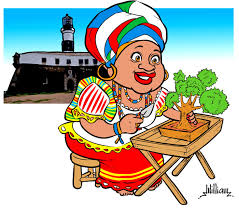
History and Origin of the Baianas Costume
The typical costume of the baianas is a mixture of Portuguese, African and Islamic culture.
The swirling skirts and starched petticoats are inspired by the style of Portuguese ladies. The necklaces and bracelets come from African culture and the turbans from Islamised blacks. “The costumes of the baianas are cultural festivals.”
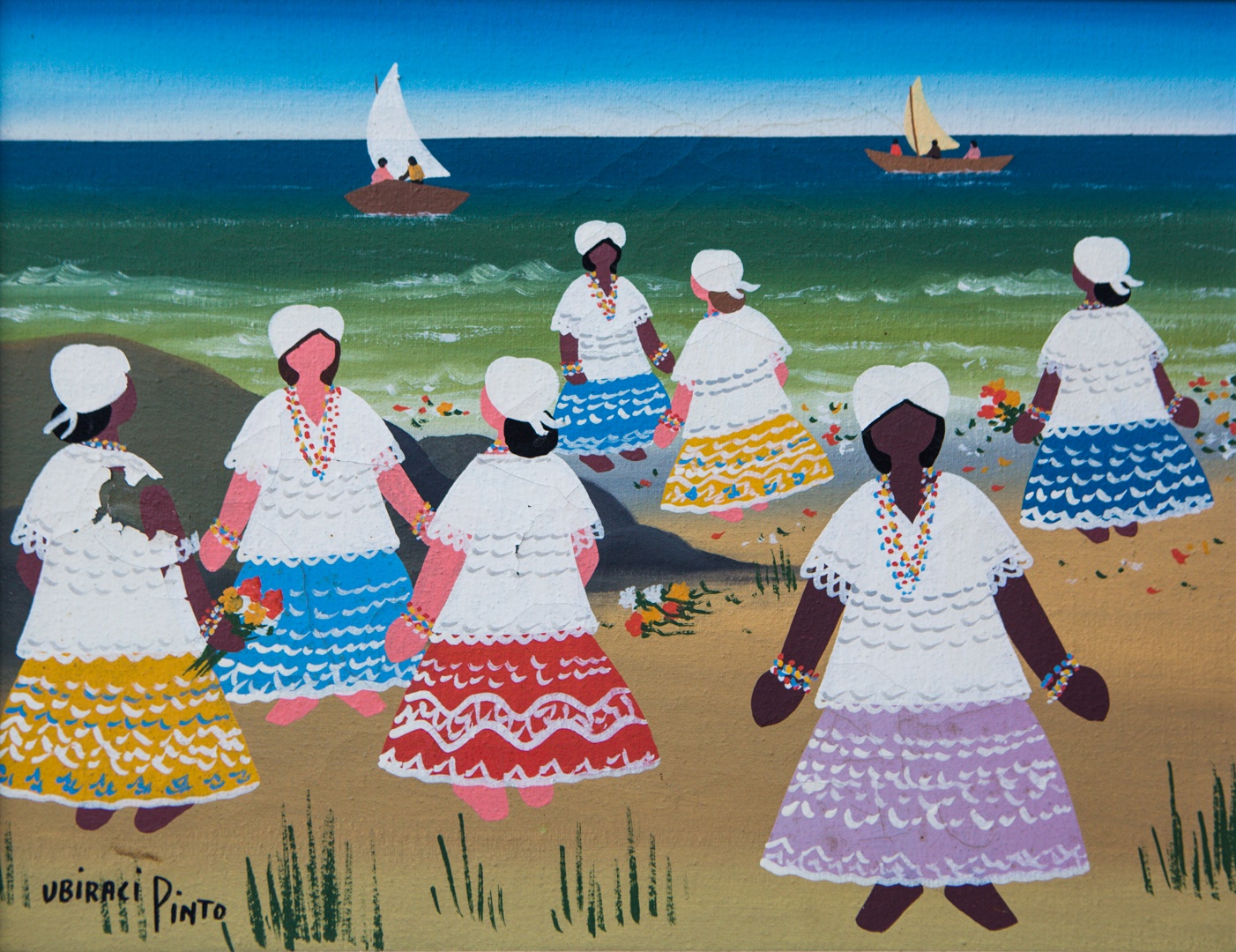
História e Origem do Traje das Baianas
In Brazil, it began to be linked to Candomblé celebrations in the 19th century.
In Africa, it is called alaká or alaká cloth.

In Brazil, it became known as pano da costa because it came from the Ivory Coast (Africa) and also because it was worn on the back.
The first panos da costa came on the bodies of female slaves, who had no clothes and were sold wrapped in the cloth.
Later, the cloths were woven right here by slaves or their descendants on rustic handlooms brought to Brazil in the 18th century.
Woven on a handloom, the pano da costa is made up of strips each two metres long and between 10 and 15 centimetres wide.
The strips are then sewn together.
White is not the predominant colour in the pano da costa, which is usually striped or embroidered in high relief and coloured with cartoon patterns, depending on the orixá of each nation.
The children of the saint wear the alaká wrapped around their change.
Slave mothers used to carry their babies on their backs (with their legs around their waists) during working hours, secured by an alaká.
Today’s “baianas”, descendants of Africans (from the Yoruba, Nagô, Mina, Fula and Haussá tribes), are the ones who put the most effort into their dress.
The Nagô women, whose presence is most noticeable in candomblés, are short and fat. They wear bright, garish colours. Wide, patterned skirts.
The Muslim Bahian (from Sudan in Africa), tall and slender, wears immaculate white. Sometimes she wears a rustic “pano da Costa” on her shoulder.
And today, as the costume of the baianas and the typical figure of Bahia, so often sung by Dorival Caymmi, we can see the baiana preaching with her colourful trays of typical foods and sweets, in the streets, hillsides and beaches of Salvador, or in rites of Candomblé and Umbanda and religious festivals such as the Lavagem do Bonfim.
See also The Colour of the Baiana Costume and Its Contemporary Readings
Baiana Day
In Salvador, on 25 November, when Baiana Day is celebrated, a mass is celebrated at the Igreja de N. Sra. do Rosário dos Pretos and cultural events such as: Samba de Roda, Capoeira, Olodum and Afoxé, at the Baianas Memorial.
The baiana is a figure who brings with her the links of ancestral African heritage – orality, cuisine, belief, mysticism, dance, ginga and, above all, colour.
You have to have ancestral blood to know what a baiana has.
Bahia.ws is the largest tourism and travel guide to Bahia and Salvador
